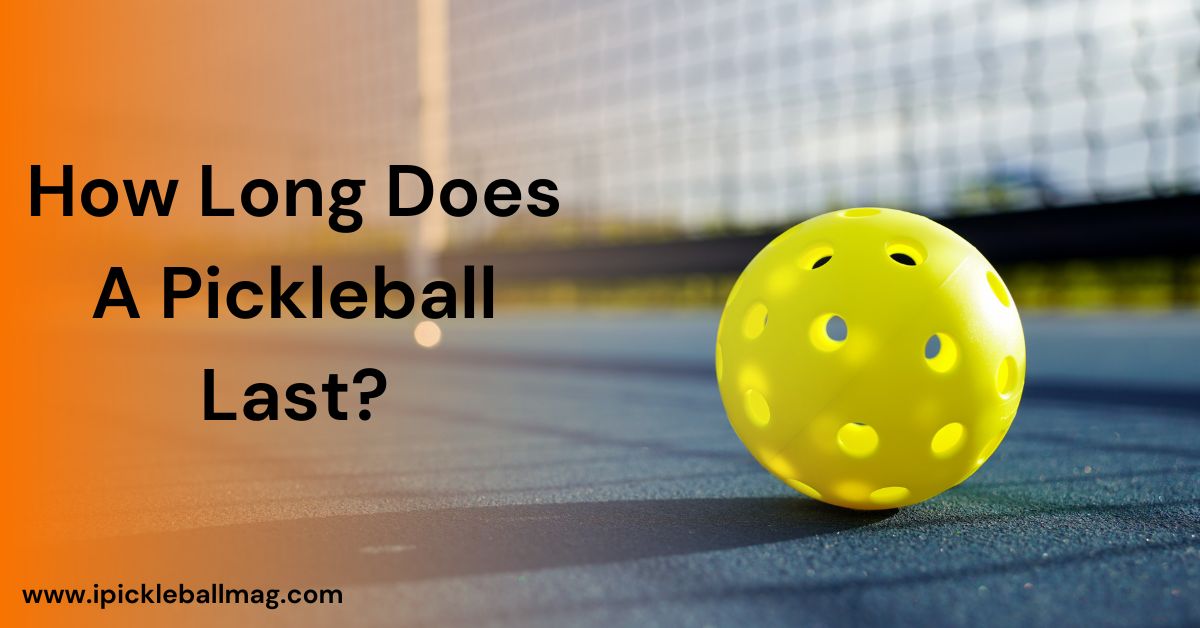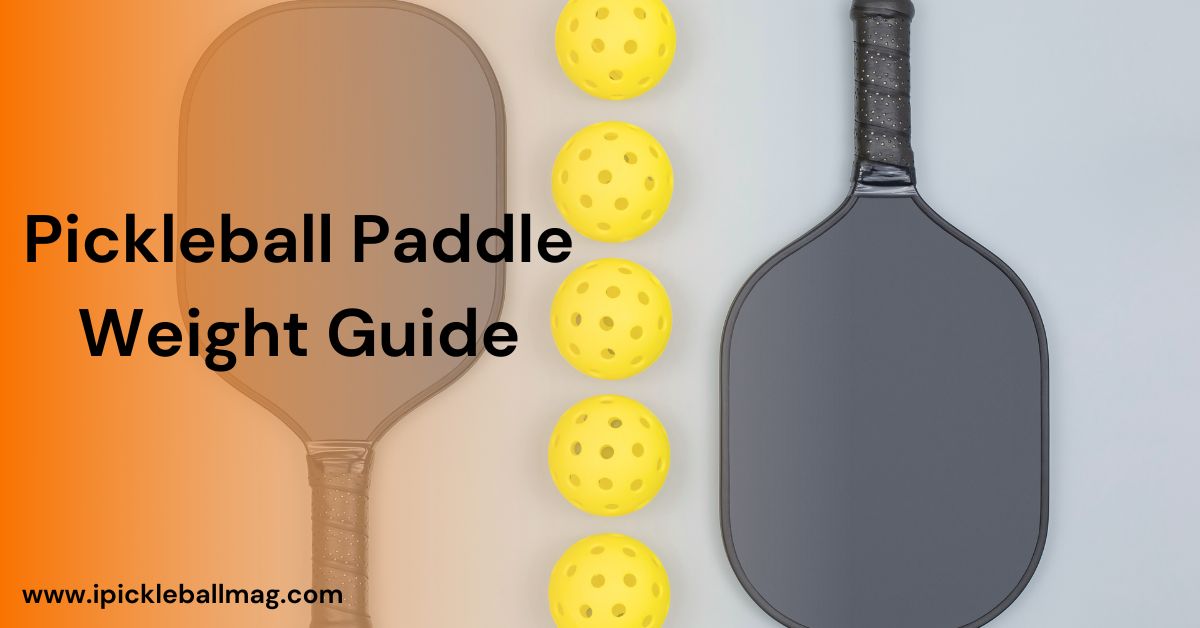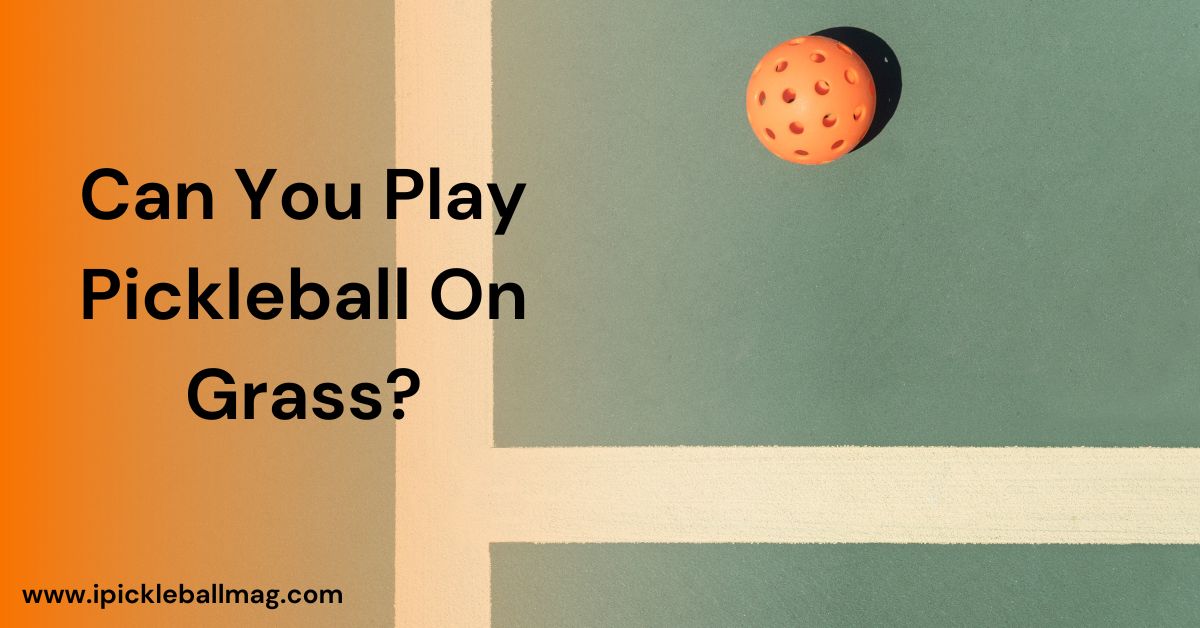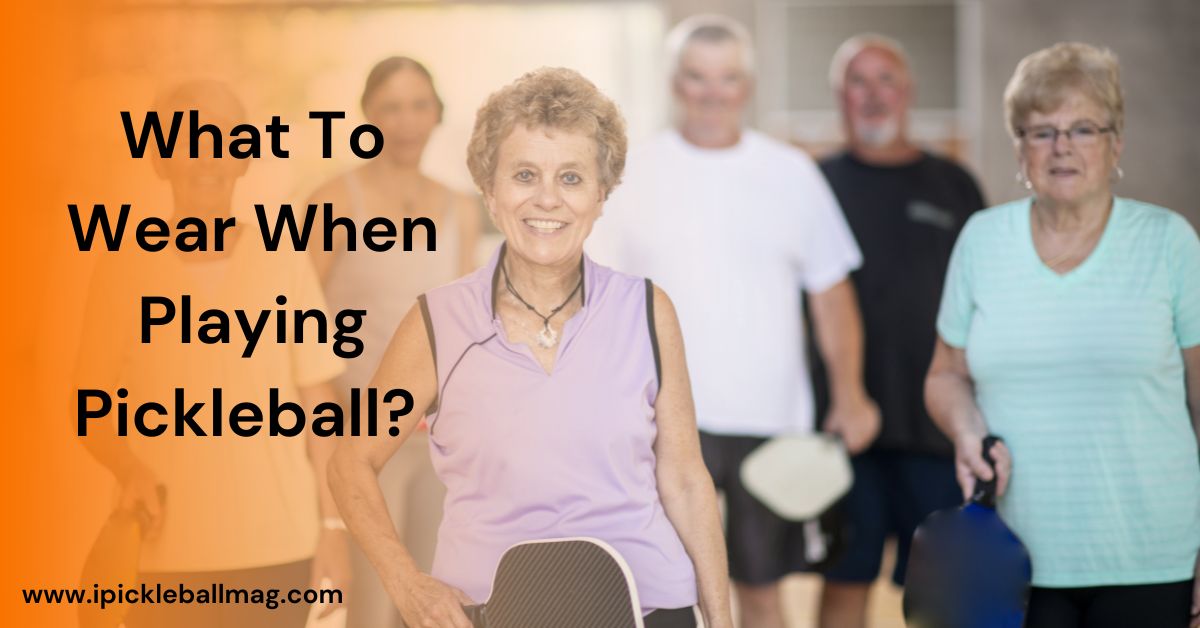What is a Volley in Pickleball? Basics and Technique
Those of you who just started playing pickleball might have heard the phrases “volley zone” and “non-volley zone” and wondered what they meant.
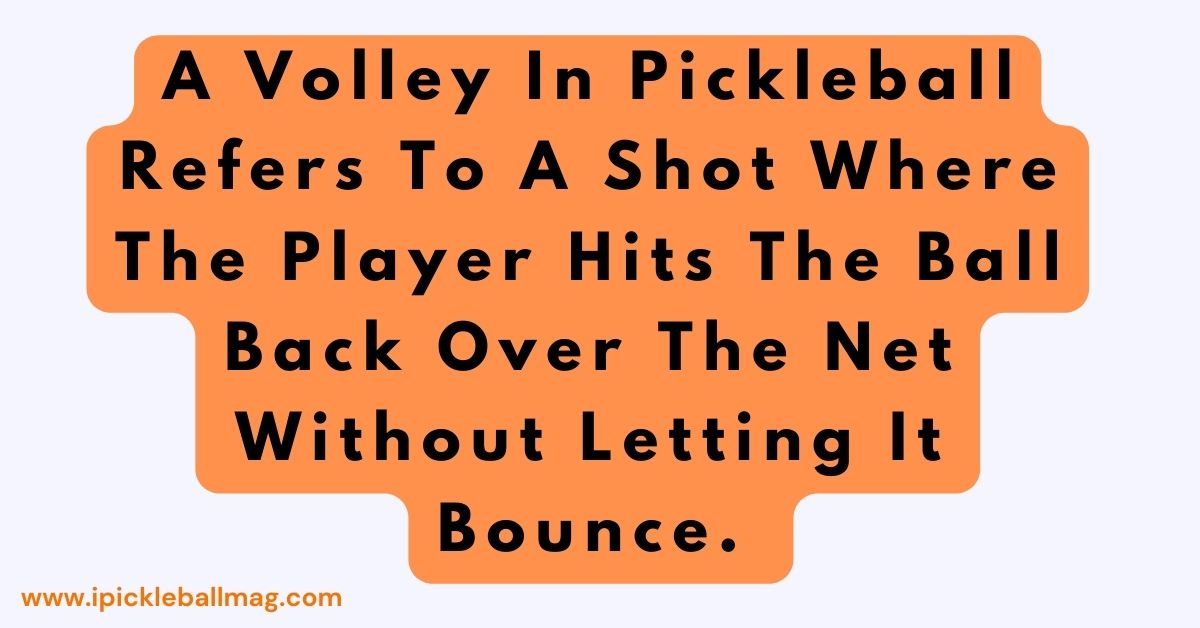
To make effective contact with the ball, you need to have quick reflexes and precise hand-eye coordination. As compared to groundstrokes, volleys are usually executed closer to the net.
What is a Volley in Pickleball – Rules and Regulations
In pickleball, volleying adds a thrilling element to the game but also comes with rules that ensure fair play.
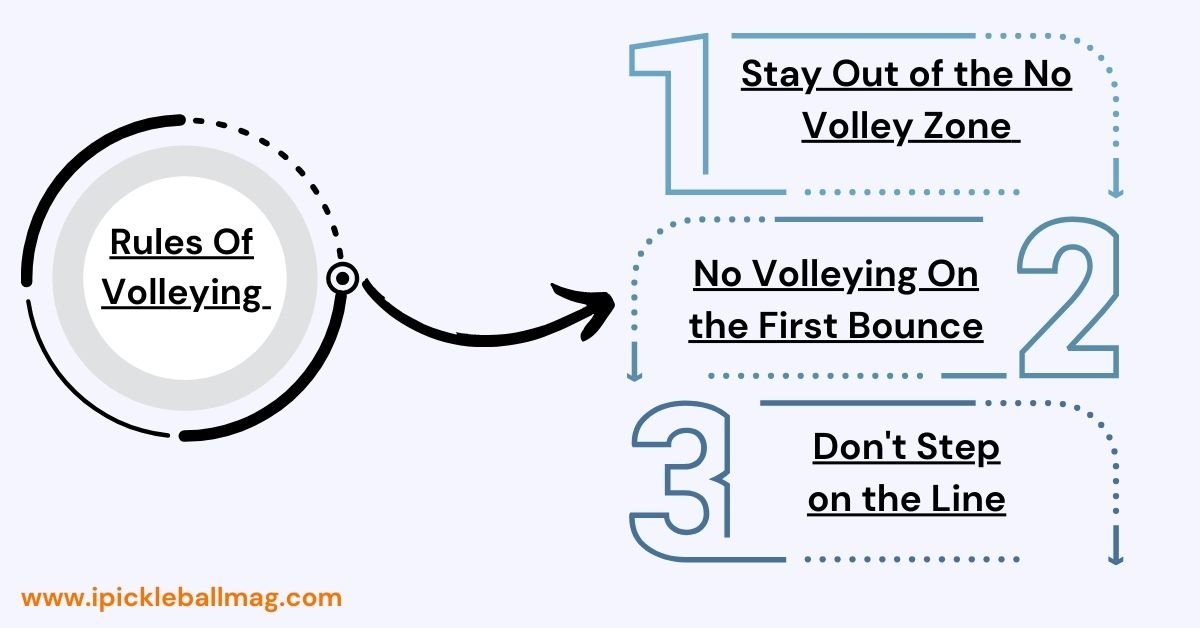
Let’s explore the rules for volleying.
Stay Out of the Kitchen
The pickleball court features a specific area known as the non-volley zone, or the kitchen, measuring 7 feet from the net on both sides. You can’t step into this area right in front of the net when you’re volleying.
It’s about maintaining a fair distance from the net to avoid unfair advantages.
No Volleying on the Bounce
In pickleball, there’s a cool rule called the double-bounce rule. It means that when the game starts, each team must let the ball bounce once on their side before they start volleying. This ensures a balanced beginning to the game.
Don’t Step on the Line
When you’re volleying, your feet must stay behind the line on the court. If your feet touch the line or cross it while hitting a volley, it’s considered a fault. So, remember to keep those feet on the right side of the line.
Effective Pickleball Volley Techniques For Successful Volleys
When you’re up close to the net in pickleball, mastering pickleball volley techniques can give you a significant advantage. These strategies involve deciding when and how to hit the ball, utilizing different volley techniques based on court positioning, ball height, and your objectives to control the game.
Let’s explore some effective volley strategies, including the strategic placement and use of volleys, to give you an edge over your opponent.
1. Finding the Gaps
Finding a gap means aiming your shots where your opponents aren’t located.
Instead of just hitting the ball back, you target empty areas on the court. This forces your opponents to move and makes it harder for them to return your shots.
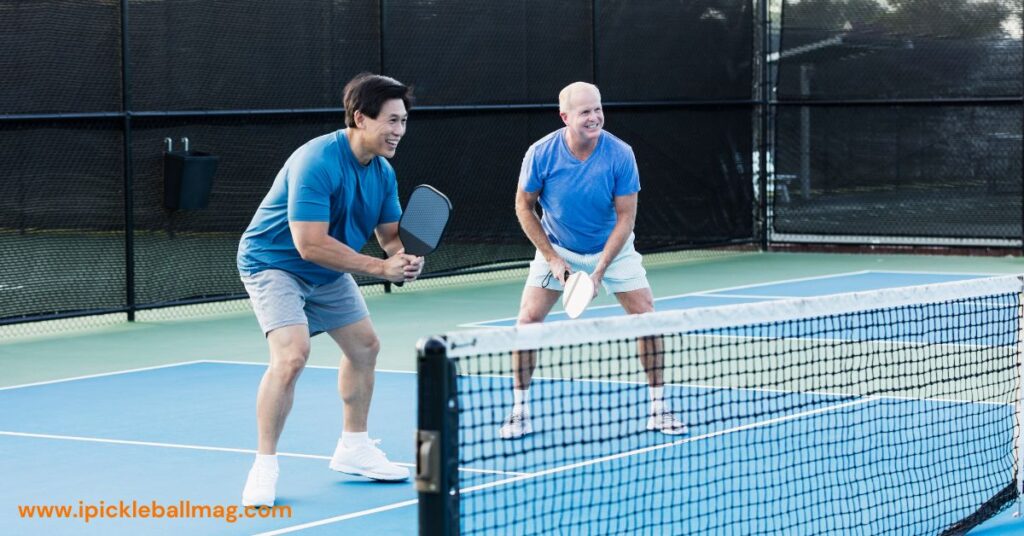
2. Stay Ready
Preparing to hit the ball when it comes to you is a valuable strategy. This helps you keep your opponents on their toes and maintain control of the game’s pace.
3. Reading the Game
You can position yourself for the perfect volley by predicting where the ball will go, especially by reacting quickly to the incoming ball.
Be prepared based on your opponent’s shots and movements to be ready to hit the ball back effectively.
4. Teamwork
If you’re playing doubles, communication is a powerful strategy. Coordinate with your partner to decide who takes which volleys.
This helps avoid confusion and ensures efficient coverage of the court.
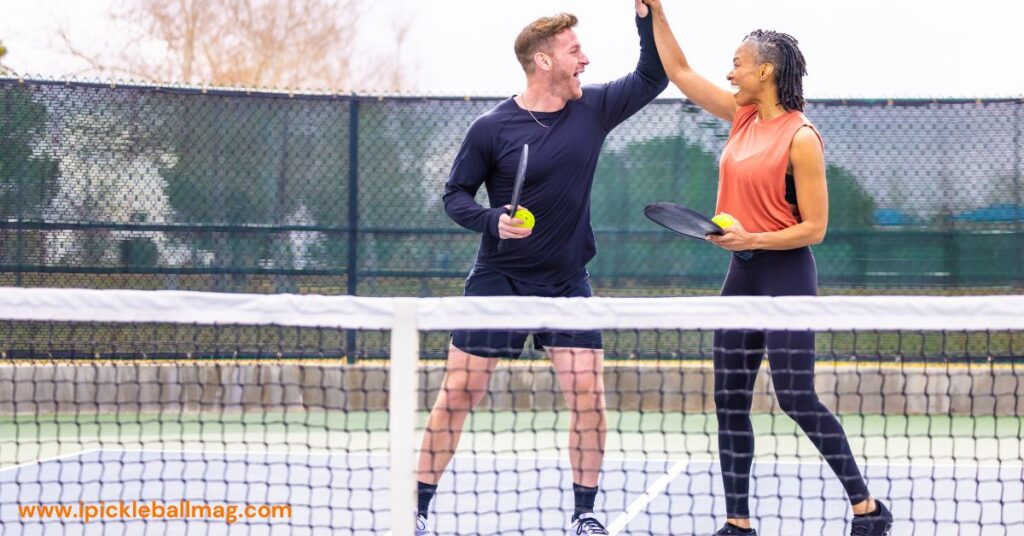
5. Proper grip and stance
An essential component of successful volleys is adopting the correct grip and stance to optimize power and control. The continental grip, where the player holds the paddle like shaking hands with an old friend, enables versatility in executing various types of volleys with ease.
Adjusting the paddle face slightly when engaging in volleys, especially low balls at the non-volley line, can significantly alter the ball’s trajectory and speed, making it more challenging for opponents to return aggressively.
Why Volleys Is Important In Pickleball
Volleys are like secret weapon short in pickleball. They help you be in control of the game and play cleverly.
It’s important because it lets you decide where the ball goes and keeps your opponents guessing. Volleys make the game more fun and exciting. As you practice and improve at volleys, you become a pickleball pro, ready to take on any challenge.
Incorporating volley drills into your practice can significantly enhance your control and precision, making you even more formidable on the court.
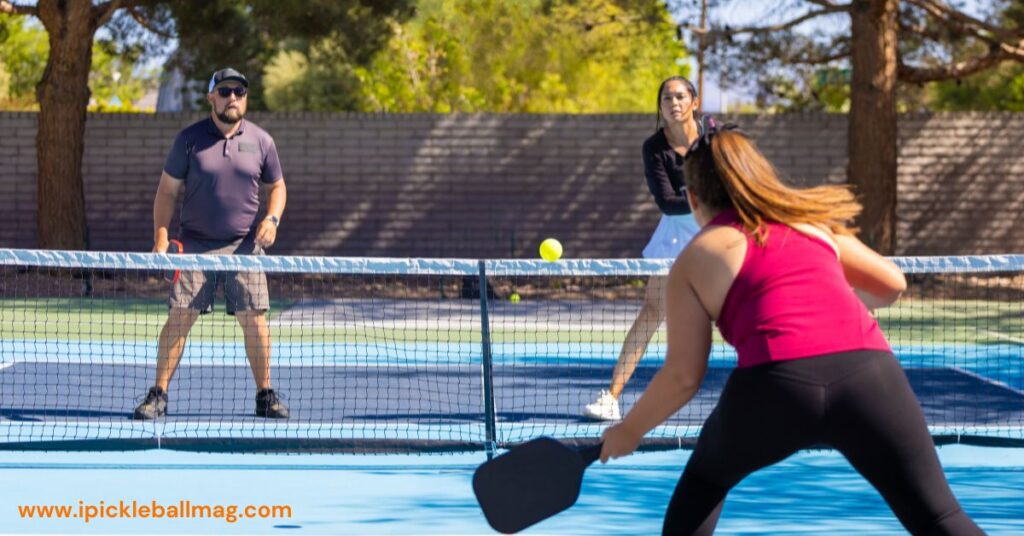
Advantage Of Volley
The volley shot has the advantage of maintaining offensive pressure at the net, limiting the opponent’s options, and forcing defense.
Keeping opponents off balance by transitioning smoothly between volleys and groundstrokes creates strategic openings for players.
Common Mistakes To Avoid When Volleying

Hitting the Ball Too Hard
Hitting the ball too hard is a frequent error in volleying. Volleys require control rather than power. Striking the ball with excessive force often results in the ball going out of bounds or into the net.
Make sure your shots are precise, controlled, and placed strategically to keep the ball in play.
Not Moving Quickly Enough
Another common mistake is not moving quickly enough. Effective volleying demands quick reflexes and flexibility. Players must be ready to move swiftly to intercept the ball. Being slow to react can lead to missed opportunities and weak returns.
Overcommitting to Volleys
Overcommitting to volleys can be harmful. This happens when players lean too far forward or position themselves too close to the net, limiting their ability to adjust to different shots.
It’s essential to maintain a balanced position and be ready to move in any direction. Overcommitting also exposes you to lobs, making it easy for your opponent to place the ball over your head.
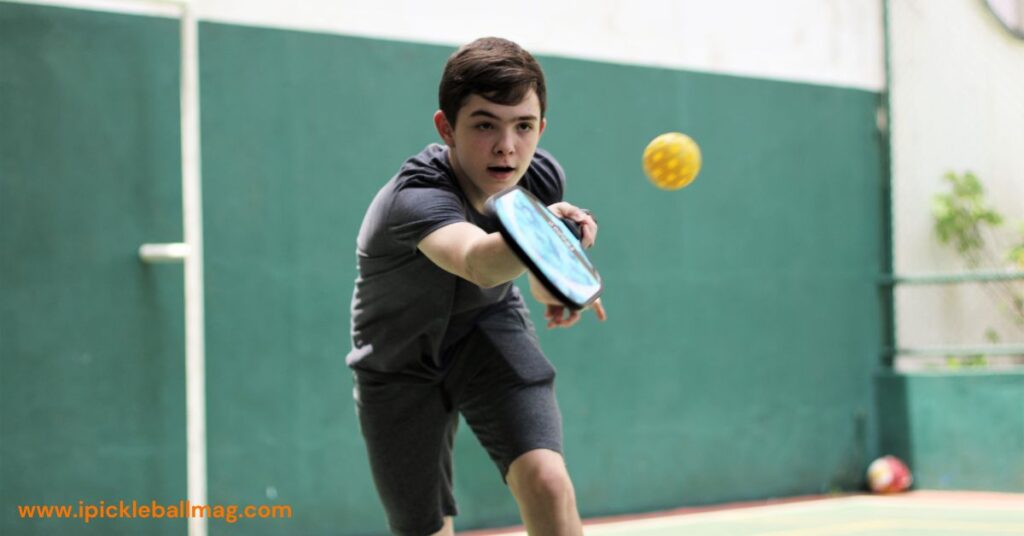
When to Use Volleys in Pickleball?
Using volleys in pickleball is like picking the perfect moment to hit the ball. When you’re close to the net, volleys help you hit the ball fast.
Mastering the strategic use of ‘drop volley’ and ‘drop volleys’ when close to the net can significantly control the game’s pace, allowing you to softly land the ball over the net and catch your opponents off guard.
They also help you control how the game goes. If the ball goes back and forth quickly, volleys let you hit it without waiting to bounce.
You can also surprise others by hitting the ball gently or powerfully, changing the game. When the ball is up high, a special volley helps you bring it down where you want.
So, using volleys at the correct times helps you play better and makes your opponents wonder about your next move.
Exploring Different Pickleball Volley Types
Let’s explore pickleball volleys and discover the unique types to level your playing skills.
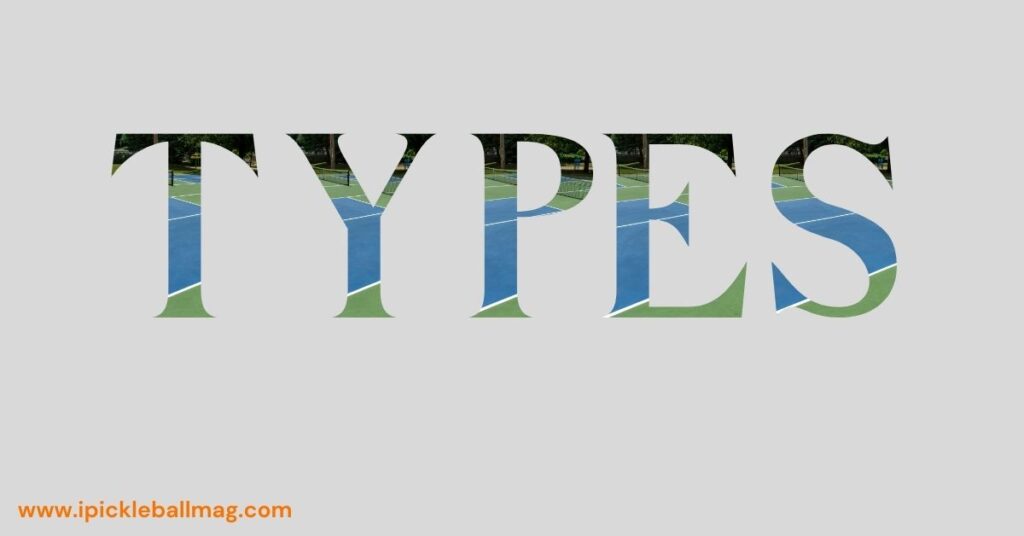
1. Forehand Volleys
This type of volley is beneficial when you’re close to the net, and the ball is on the side of your playing hand.
When you use a forehand volley, you gently guide the ball where you want it to go. You see the ball coming towards you and meet it with your paddle, sending it back smoothly.
A forehand volley can be aggressive as well as gentle, depending on the situation. Often, they are used for quick, controlled shots.
2. Backhand Volleys
Backhand volleys seem trickier, but they’re just as important. When the ball comes to your other side, you use the backside of your paddle to hit it.
You can become a backhand volley pro with some practice and surprise your opponents with your skills.
3. Overhead Volleys
Ever feel like the ball is flying high above you? That’s when the overhead volley comes to the rescue.
Overhead volleys are typically used when the ball is lobbed high over your head. They require good timing and positioning to execute effectively and can be a powerful way to finish a point.

4. Dink Volleys
The ‘dink volley’ is a strategic soft volley technique used in pickleball, executed close to the non-volley line. It involves gently hitting the ball in a way that it travels at a low trajectory, making it bounce low on the opponent’s side.
This technique is crucial for controlling the placement of the ball and preventing opponents from gaining an advantageous position.
5. Punch Volleys – What Is A Punch Volley In Pickleball?
In pickleball, a ‘punch volley’ involves a volleying technique where the paddle face is kept relatively firm and the motion is similar to a punch.
The aim is to direct the ball towards the opponent’s feet or into an opening at the net during a quick exchange. This technique emphasizes a firm wrist and a calm body posture, making it one of the most common and effective volleys in the game.
6. Roll Volleys
The ‘roll volley’ in pickleball is characterized by its unique rolling motion, where the paddle is swung in an upward arc to impart topspin on the ball.
This technique is essential for players looking to add variety to their volleys and can be a game-changer in winning points during a match. Mastering the roll volley requires practice and understanding its strategic uses in different game situations.
Differences Between A Volley And A Groundstroke
As we consider the differences between volleys and groundstrokes, it is important to understand the impact that timing has on shot execution.
Volleys require more control and finesse due to their lack of bounce, while groundstrokes utilize the rebound from the surface to generate power.
In addition, volleys are often employed in fast-paced exchanges at the net, allowing players to dictate the pace of the point. Conversely, groundstrokes are commonly executed from the baseline to set up offensive plays.
A drop shot differs from a volley in terms of strategy and execution, as it is a softer, strategic shot gently lobbed over the net to land in the opponent’s non-volley zone, often used when transitioning from defense to offense.
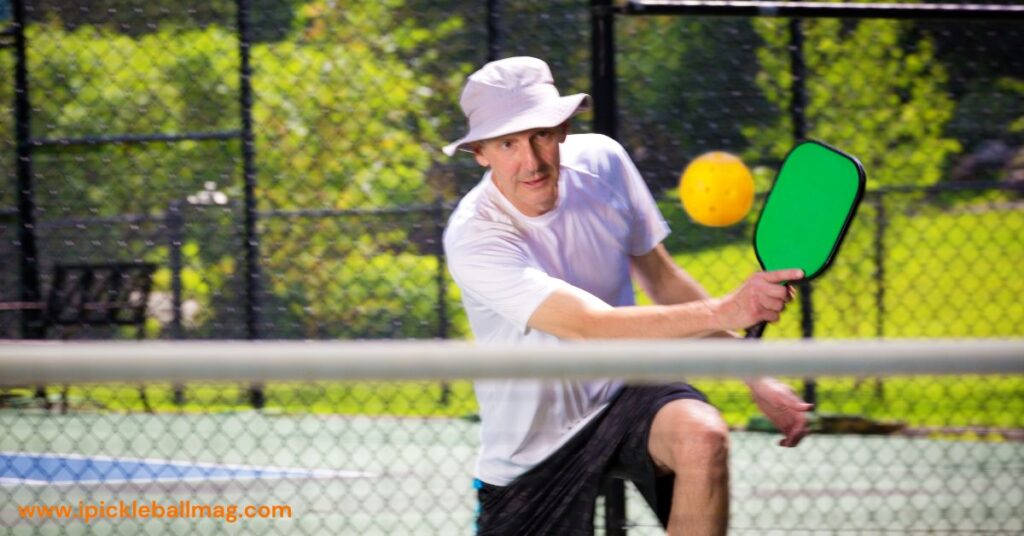
FAQS
Frequently asked questions about volleying In Pickleball are :
What are the basics of hitting a volley?
To hit a volley in pickleball, you must position yourself in front of your body, hold your paddle with the right grip pressure, and make contact with the ball at the correct moment for power and control.
What is a Non-Volley Zone? Understanding the Non-Volley Zone in Pickleball
The non-volley zone, also known as the kitchen, is the area on the court close to the net where players are not allowed to hit volleys.
This includes the opponent’s non volley zone, which is a critical area for executing strategies such as dink volleys or drop shots to gain an advantage.
The rule prevents players from using aggressive tactics too close to the net.non-volley
How can I improve my pickleball volley?
To improve your pickleball volley, practice hitting volleys with different grips and paddle faces, work on your footwork to be in the right position, and focus on hitting the ball softly and with control.
What is the importance of hitting a low volley in pickleball?
Hitting a low volley in pickleball is important as it helps you clear the net easily, control the ball trajectory, and put pressure on your opponent. It is a key skill to master for winning rallies.
Can you use spin on volleys in pickleball?
Yes, you can use topspin or backspin on your volleys in pickleball to control the ball’s direction and bounce. Experiment with different spins to add variety to your shots.
How many types of Volley are there?
There are three types of volleys in pickleball. Forehand, backhand, and overhead. Each adds a unique touch to your gameplay.
Conclusion
To sum it up, learning how to volley well in pickleball is very important for playing better and smarter on the court. By understanding different kinds of volleys, players can use these shots to keep the rallies going, control the game’s speed, and make winning plays at the net.
It’s crucial to avoid common mistakes like hitting the ball too hard, not moving quickly enough, and getting too close to the net.
Using the techniques, rules, and strategies talked about in this article will help players get better at volleying in pickleball and become stronger competitors in the game.
It’s not hard, keep practising, and have a good day.

